Success Story-1
Large Scale Dissemination of Orchard Grass in Fruit Orchards: District Ganderbal, Kashmir
Orchard grass or cocksfoot (Dactylis glomerata L.) is one of the most important perennial forage grasses in the world owing to its high forage productivity, quality, and hardiness under varying climatic conditions. Due to high sugar and protein contents, it is used for hay or silage production and grazing worldwide. There is a chronic fodder scarcity in the district, and most of the fruit orchards have been invaded by various weeds. The problem of fodder shortage can be overcome by using high-yielding perennial forage grasses with appropriate crop management practices, which also help in suppression of weeds.
Keeping in view these facts, ICAR-IGFRI RRS Srinagar conducted 200 Fodder Technology Demonstrations of Orchard Grass during 2021–23 to evaluate the performance of this high-yielding perennial forage grass with package of practices at farmers’ fields in several villages in district Ganderbal.
ICAR-IGFRI Regional Research Station Intervention
ICAR-IGFRI Regional Research Station (RRS) Srinagar conducted 400 Fodder Technology Demonstrations of Orchard Grass during 2021–23 with standard package of practices. The total area under demonstration was 40 ha with 200 farmers’ fields. The high-yielding forage grass, IGFRIRRS-Dactylis-17, was taken in the demonstration. Some of the specific characteristics and observed performance are summarized below:
| Specific Characteristics of the Grass |
Package & Practices |
Performance Observed |
Multi-cut and drought tolerant
Resistance to diseases
Plant height: 100–105 cm
Green Fodder Yield (GFY): 20–25 t/ha
|
Seed rate: 16 kg/ha
Spacing: 30 cm × 30 cm
NPK @ 100:60:40 kg/ha
Integrated use of 75% inorganic + 25% organic nitrogen (FYM basis)
Harvesting at 50% flowering stage
Cutting interval: 45–60 days
|
Plant height: 100–115 cm
Growth: Vigorous
GFY: 25–30 t/ha
Crude protein: 11.12%
Forage availability increased by 20–25%
Milk productivity enhanced by 10–15%
|
Outcome
M/S Zaitoon Begum—an innovative farmer from Choont Waliwar village of Ganderbal district—has been a beneficiary of the TSP programme for the last three years. The cluster of villages in Ganderbal district is rich in fruit diversity, growing crops like apple, grapes, cherry, peach, and walnut. There is ample scope for cultivating perennial fodder grasses and legumes, such as Dactylis, tall fescue, and sainfoin, in these orchards for augmenting forage availability and achieving additional benefits such as weed control, improved soil fertility, and enhanced pollination.
Impact
She has motivated more than 200 farmers to take up this activity in their orchards. Several orchards (covering more than 40 hectares) have been enriched with fodder grasses, like Dactylis (Orchard grass) which have also increased soil fertility and microbial diversity simultaneously. During the year 2022 she received IGFRI-Innovative Farmer award for her outstanding contribution in the field of forage extension.
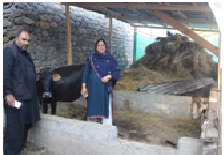

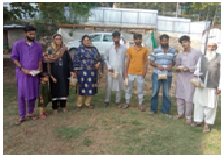
Dactylis grass in fruit orchard and its distribution among farmers
Success Story-2
Transformation of Lantana-infested degraded grassland into a continuous fodder source by introducing perennial fodder grasses
Affiliation: Centre for Indian Himalayan Grasslands, ICAR-IGFRI- Palampur
Location: Kandral village of Kangra district in Himachal Pradesh
Period: 2018-2024
Nutritious green fodder is extremely important for the growth, health, and productivity of livestock. In hilly regions like Himachal Pradesh, due to climatic variations, drought, low yield, and the lack of use of good quality varieties, green fodder is not available throughout the year. The spread of weeds such as Lantana (Lantana camara), Parthenium (Parthenium sp.) and Neela Phoolnu (Ageratum conyzoides) has led to a decline in the area and productivity of grasslands and pasture lands, posing a serious threat to humans, livestock, the environment, and biodiversity.
Intervention by Centre for Indian Himalayan Grasslands, ICAR-IGFRI-Palampur
The Scientists from the Centre for Indian Himalayan Grasslands, a centre of ICAR-Indian Grassland and Fodder Research Institute, located in Palampur, Himachal Pradesh, have taken the initiative to restore grasslands and pasture lands that have been degraded due to these harmful weeds. For this purpose, the scientists identified around 4 acres of land in Kandral village of Kangra district, which had become unproductive due to infestation with Lantana.
They decided to grow high-quality, high-yielding fodder crops such as Brachiaria, Setaria, Paspalum, and Hybrid Napier on this land. These fodder crops not only prevent the growth of weeds but also provide nutritious green fodder throughout the year for livestock farmers. In addition, they help prevent soil erosion.
The institute’s scientists implemented this program in various phases:
In the first phase, they surveyed the village and, based on the condition of the degraded pasture land, climate, and soil, selected suitable fodder crops.
In the second phase, with the help of local villagers, they cleared the marked land of weeds and unwanted vegetation.
In the third phase, suitable fodder crops like Brachiaria, Setaria, Paspalum, and Hybrid Napier were planted under the supervision of scientists. Initially, appropriate amounts of water and organic manure (cow dung compost) were provided. Fencing was also installed to protect the crops from wild and stray animals.
The scientists regularly monitored the growth of the fodder crops and managed them properly to ensure healthy development. Once the fodder crops reached a usable stage, local villagers were trained in key aspects such as the right time and method of harvesting and post-harvest management. Additionally, farmers were made aware of how much fodder to feed their animals, what components to include, and how to store surplus fodder for longer durations.
Outcome:
As a result of this program, the weed-infested and unproductive pastureland in Kandral village has been transformed. The productivity of the land has increased four to five times, and where land once lay unproductive, weed-infested and degraded, farmers are now able to obtain nutritious green fodder year-round, generating higher income from livestock farming.
Transplantation of rooted slips of perennial fodder grasses
This initiative by the Centre for Indian Himalayan Grasslands, ICAR-IGFRI-Palampur, is certainly a commendable step toward the restoration of unproductive weed-infested pastureland, controlling the spread of invasive weeds, and meeting the nutritional fodder needs of farmers in Himachal Pradesh.
Interventions for successful establishment of transplanted perennial fodder grasses (rooted slips)
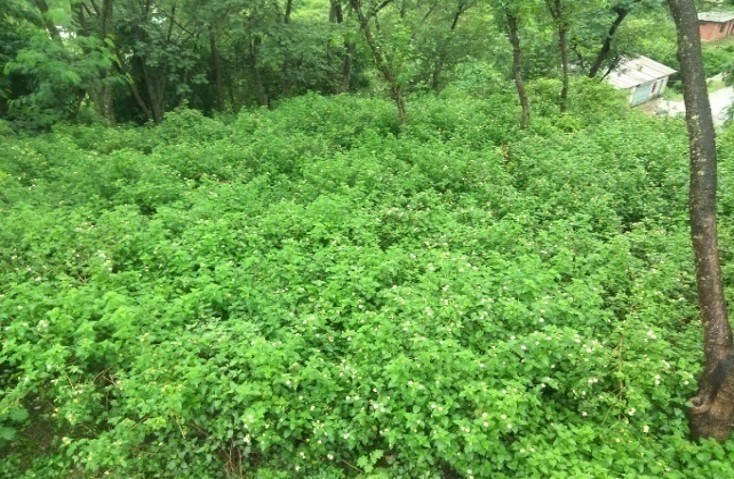
Pastureland infested with Lantana
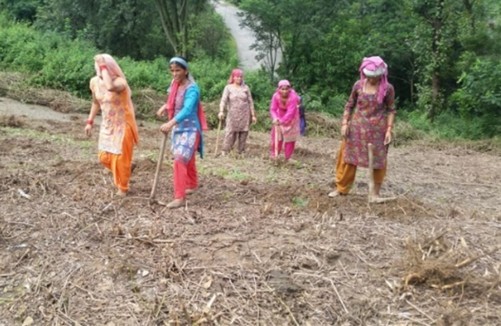
Removal of Lantana and other unwanted vegetation
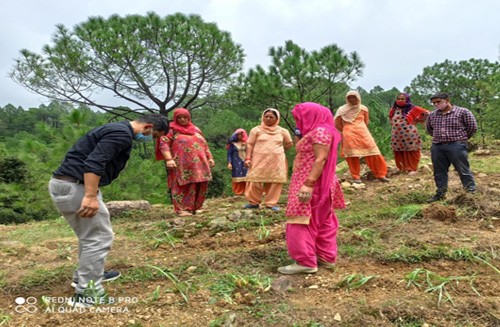
Transplanted of rooted slips of perennial fodder slips
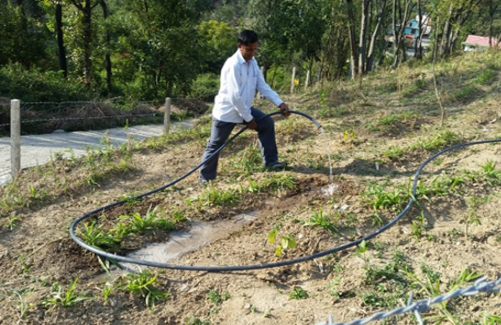
Interventions for successfull establishment of transplanted perennial fodder grasses rooted slips
Transformed degraded lantana-infested grassland into a continuous fodder source